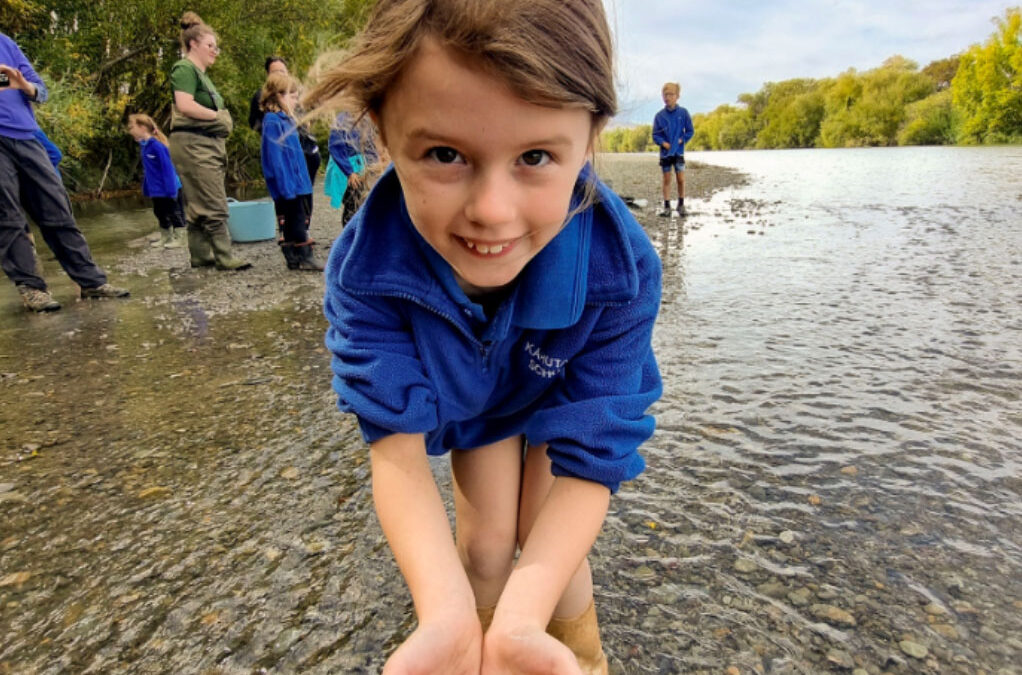Words by Jane Riddiford
As I walk through the Ruamāmahanga farm wetland on one of those wonderful misty mornings, that the Wairarapa specialises in, my niece Rosa, who is a primary school teacher, asks me. “What do you hope will happen over the next 20 years?” We have been looking at all of the trees and grasses that, thanks to Rod’s extra watering, have survived our dry summer. In my mind’s eye I saw the terrace we were walking along covered in the dark green mantle of the New Zealand bush. However it was more than that. “ I really hope that people of all ages continue to come and be involved and that they and all of us grow with the changes that are taking place” I said. I was thinking about the three primary schools we have been fortunate to work with over the last couple of months; Southend, Martinborough and Kahutara. Along with the young people, we are learning more about the Ruamāhanga river that flows past the farm.


We are in the first stages of delivering Te Reo o Te Wai, a six month project combining storytelling, hands-on freshwater science and native plant restoration along the river and in the nearby wetland. Thanks to support from the charity Mountains to Sea, fish traps have been set and inspected, water flow and temperature has been measured and invertebrates counted. Each school will undertake four field trips, which will be followed by creative literacy and arts sessions back at school and at Hau Ariki, the Martinborough Marae. During Conservation week, which is the first week in September an exhibition will be held at the Waihenga Centre in Martinborough. A lot will happen over the coming months, including our young scientists giving voice to the water and the creatures that live there, through their imaginations and a range of creative literacy activities. We began the project with year 3 and 4 from Kahutara school, and were impressed at how the children really thought about the different qualities of water, and how it might feel to be some of the things they discovered in the river, like the tiny bully fish or the large freshwater Kōura. To read and see more pictures here are some great posts from Kahutara School and Mountains to Sea

